Artist and film-maker Derek Jarman’s house: inside Prospect Cottage
A new book shines a spotlight inside artist and film-maker Derek Jarman’s Dungeness ‘escape house’
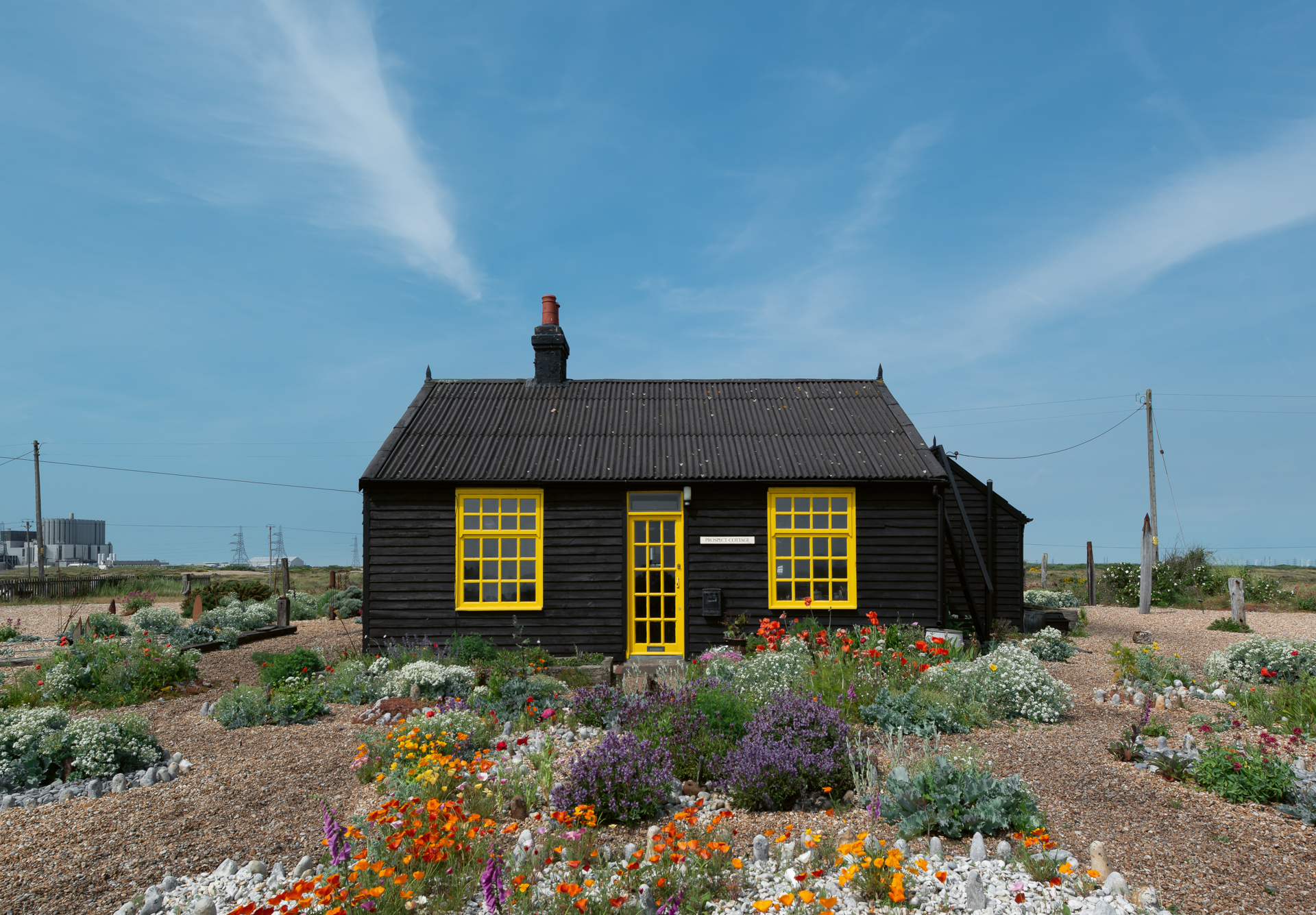
This year marks 30 years since the artist, filmmaker and gay activist Derek Jarman died, aged just 52, in London in 1994. He had been diagnosed with Aids in December 1986, a decade before radical antiretroviral treatment lifted life expectancy of those diagnosed with HIV up to a more general, expected level.
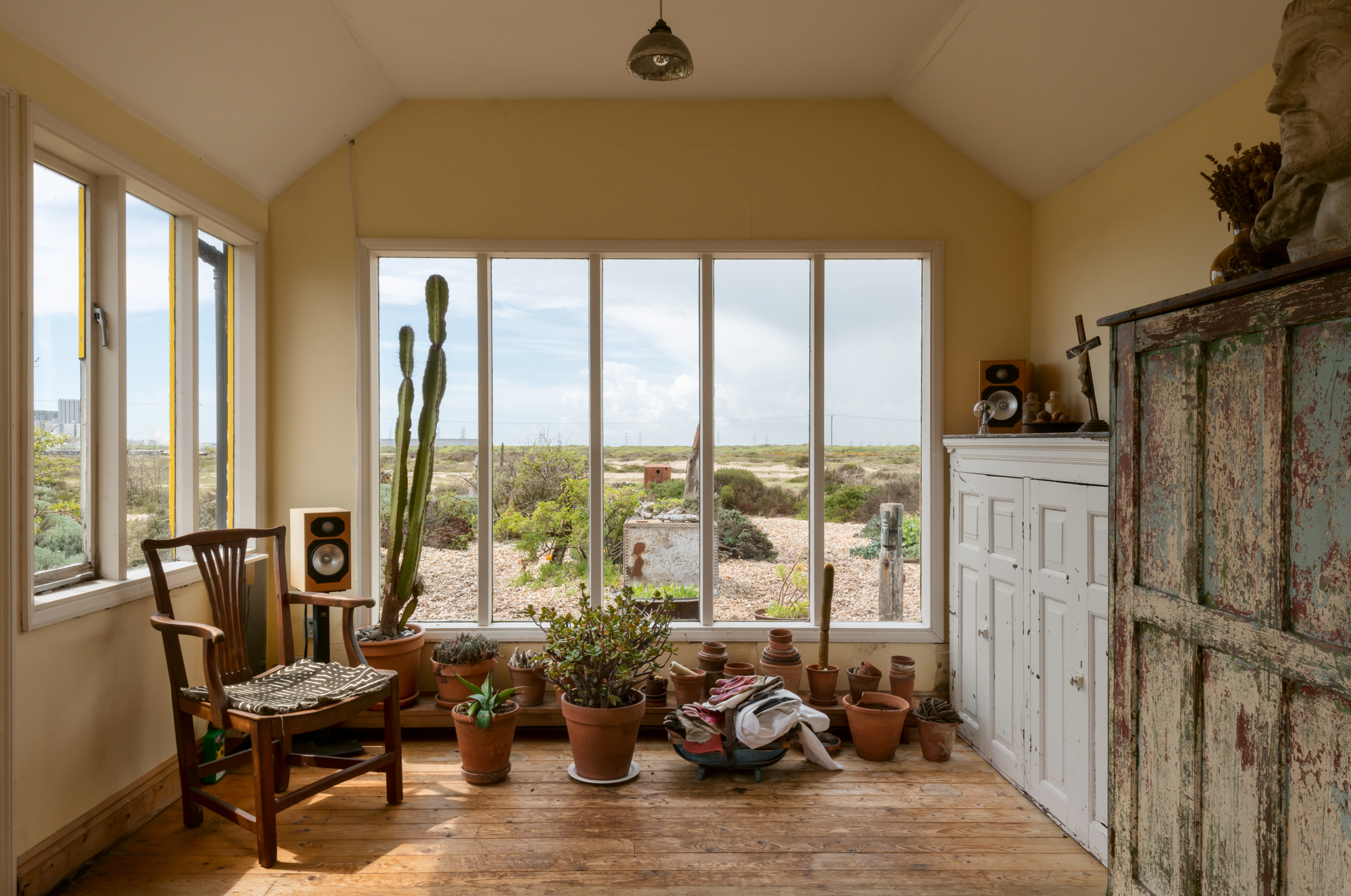
The garden room
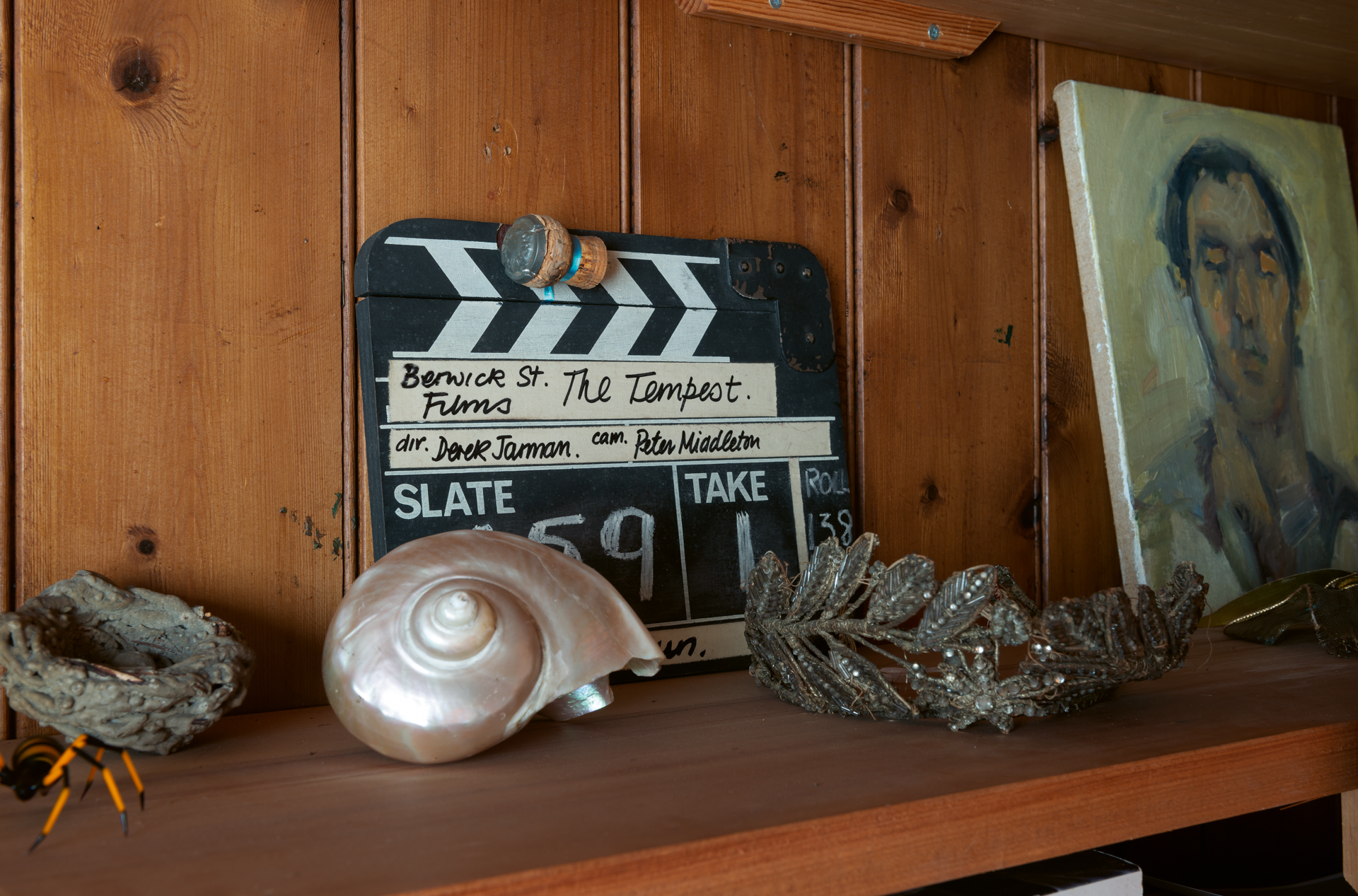
A clapperboard from The Tempest (1979)
In the same year, Jarman acquired a second home away from London, a fisherman’s cottage on the Kent coast. No doubt attracted to its situation in the dystopian cast of Dungeness nuclear power station, he had spotted it on a location visit with his friend and regular collaborator, the actor Tilda Swinton.
Prospect Cottage: Derek Jarman’s House
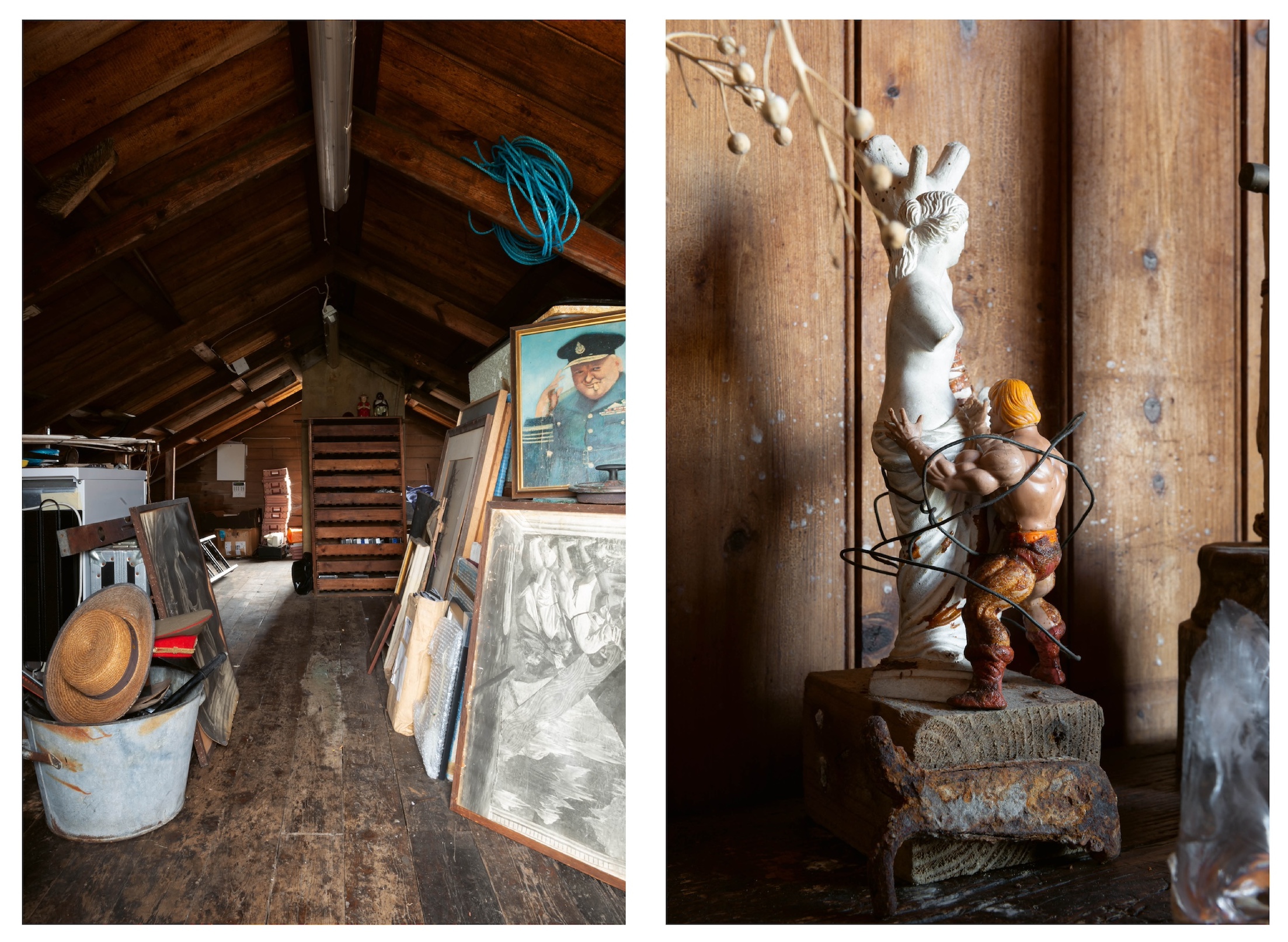
Left: pictures and posters stored with tools for maintaining
Prospect Cottage. Right: 'He-Man clutches a classical plaster cast' (c. 1988)
A new book, Prospect Cottage: Derek Jarman’s House, by Gilbert McCarragher, a Dungeness local, friend and photographer, invites us to experience the world as Jarman saw it from within the house, and of which he wrote in his diary, in 1990:
‘Prospect Cottage is the last of a long line of “escape houses” I started building as a child at the end of the garden: grass houses of fragrant mowings that slowly turned brown and sour; sandcastles; a turf hut, hardly big enough to turn around in; another of scrap metal and twigs, marooned on ice-flooded fields – stomping across brittle ice.’
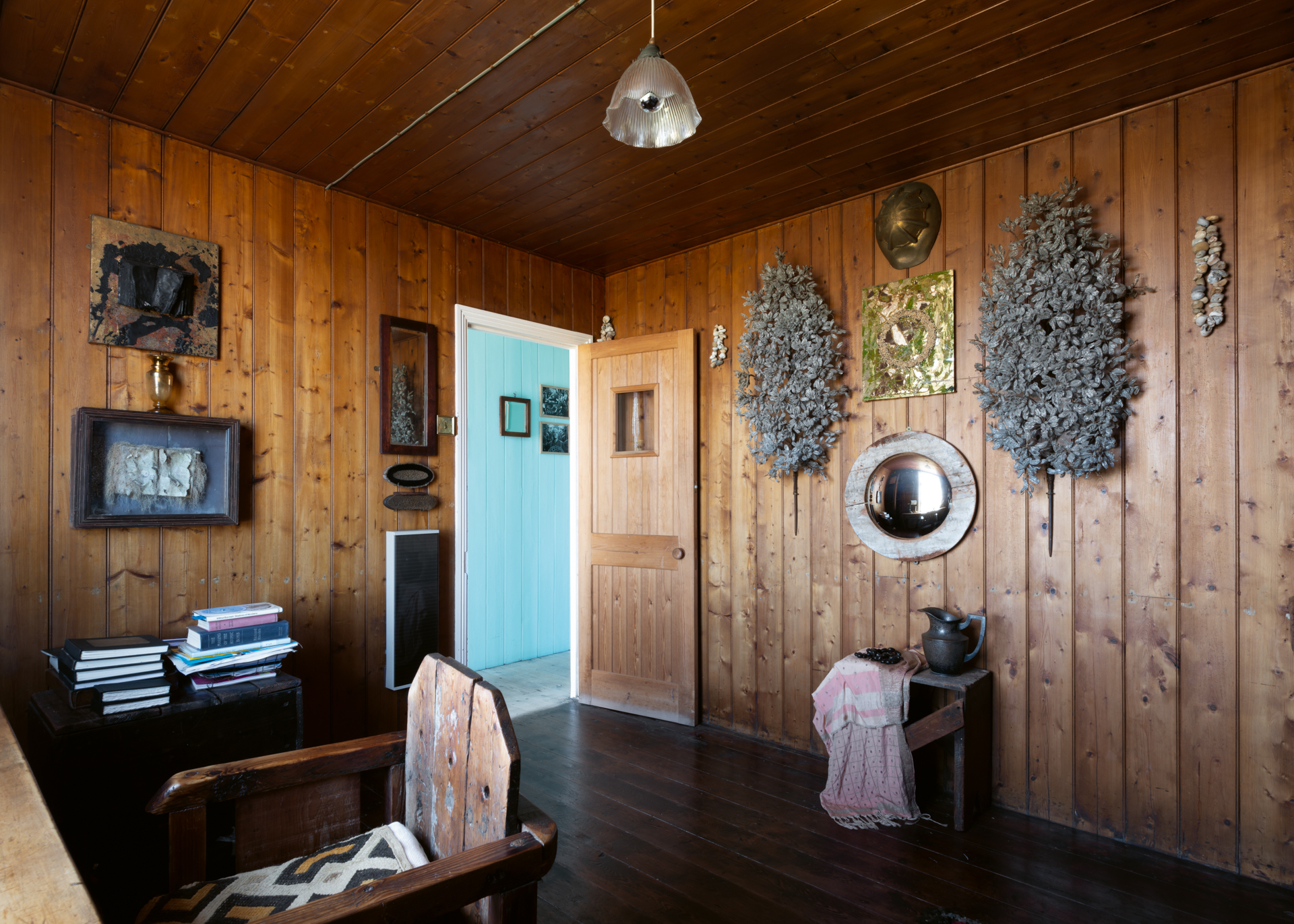
Spring Room
Today, Prospect Cottage is a pilgrimage site, because while many of us who came of age in the 1980s will be familiar with the scope of Jarman’s art, arguably it is the house and his enchanting shingle garden that stirs the artist and activist's global reputation.
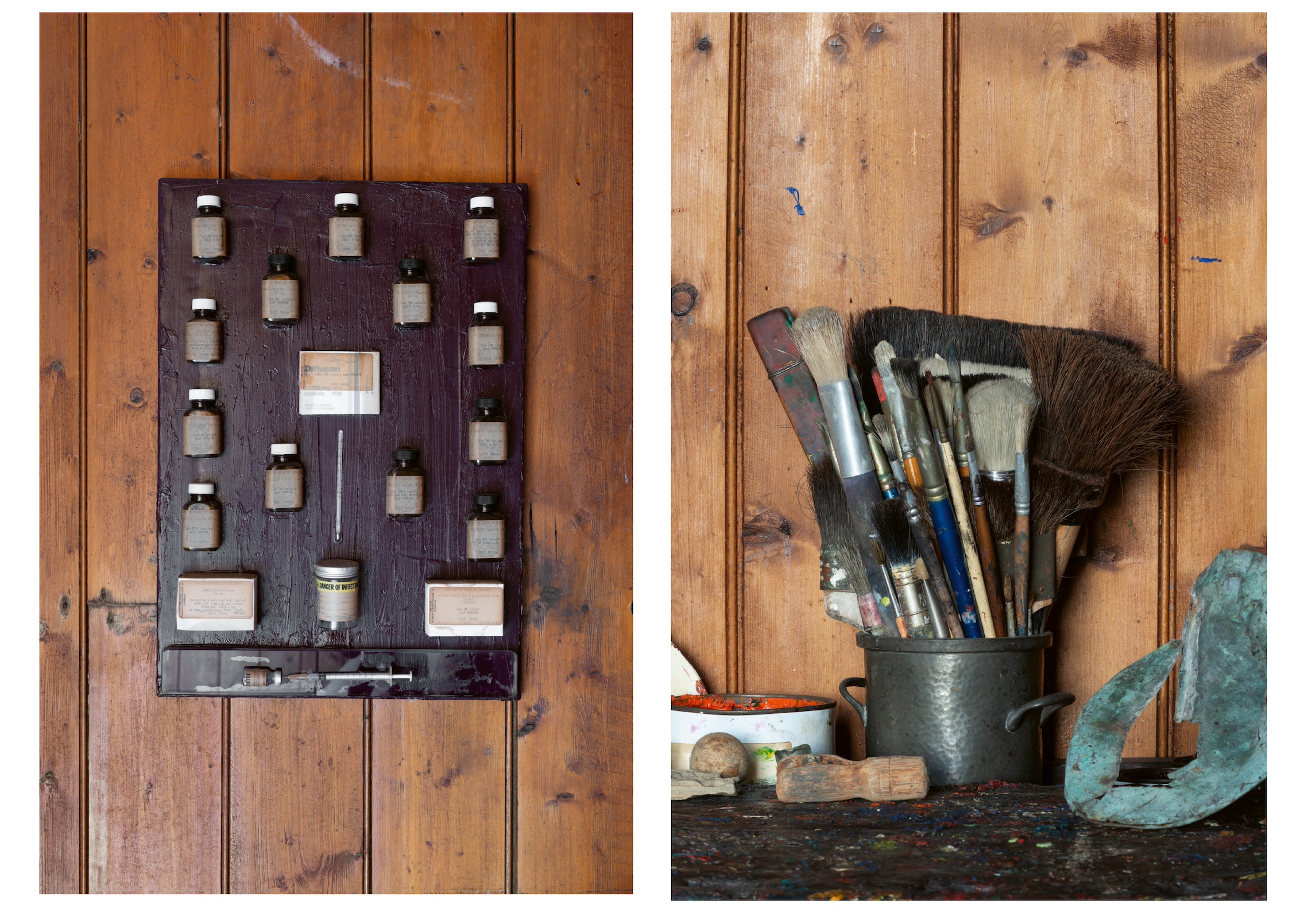
Left: 'One Day’s Medication' (1993), collates the daily dose of medication required to treat the effects of the HIV virus Right: Brushes and tubs of grommets and weights used for fishing
The garden, fenceless, reaching out into the shingle beach, is a generous legacy, but it is only recently that visitors have been allowed to enter the cottage, at certain times of the year. Otherwise, McCarragher’s book bestows as intimate a view of Prospect Cottage as you are likely to get.
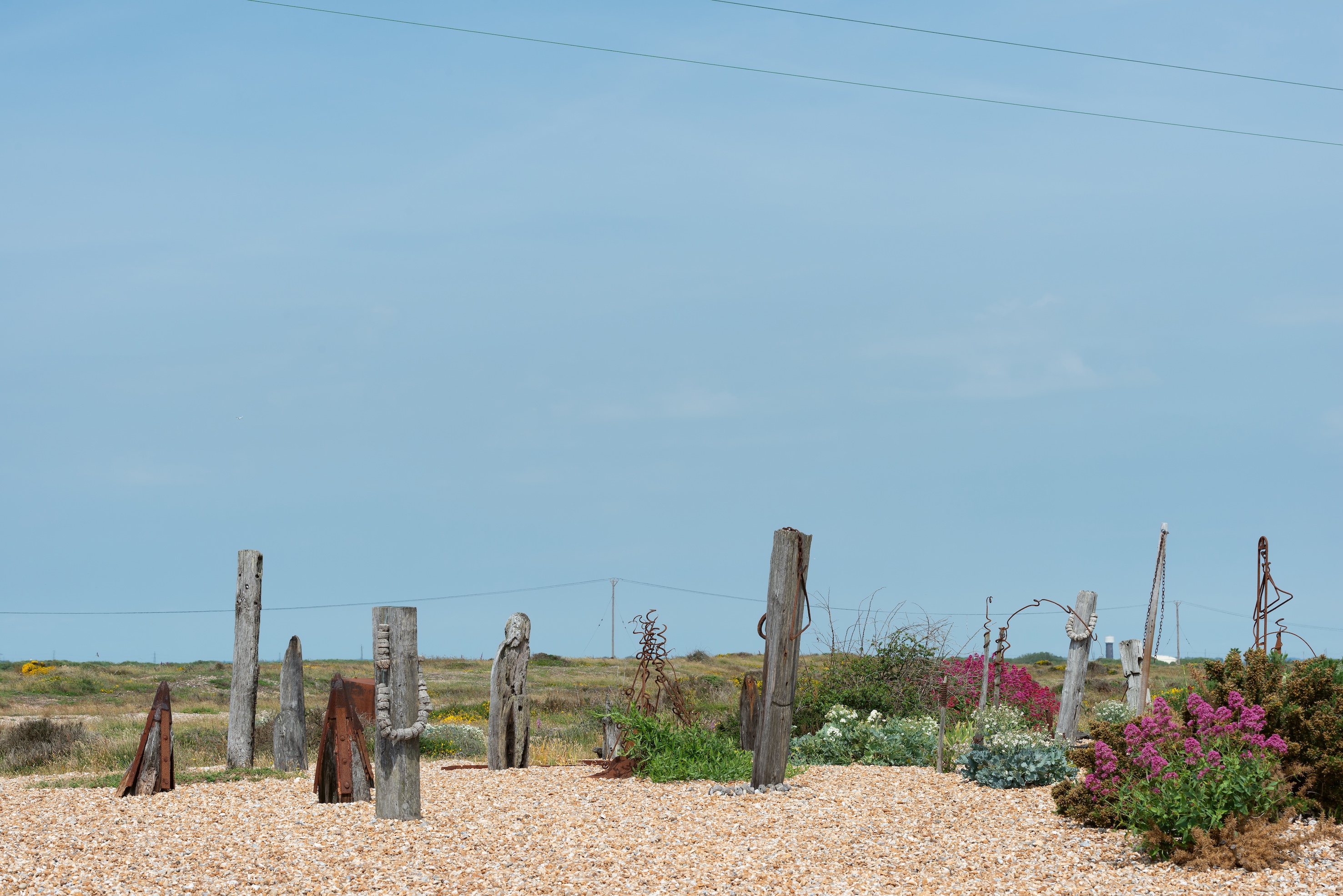
Driftwood and found material totems
Jarman and his partner Keith Collins lived between Dungeness and London for nearly a decade, and Collins was there alone for a couple of years after the artist’s death. It was he who hung net curtains up to prevent a constant stream of curious visitors peering inside. Now, they are gone and, after a dedicated, nationwide campaign, Prospect Cottage is saved for the nation and under the careful management of the Creative Folkestone arts organisation.
Wallpaper* Newsletter
Receive our daily digest of inspiration, escapism and design stories from around the world direct to your inbox.

The bedroom
This new book, and McGarragher’s devotion to both the house and its subjects offer touching insight to Jarman as a person, beyond his significant cultural and political achievements. Art historian Frances Borzello’s moving foreword also illuminates Jarman’s deeply poetic nature, allowing us to understand, in some way, the gnawing void that those closest to him are destined to live with every day.
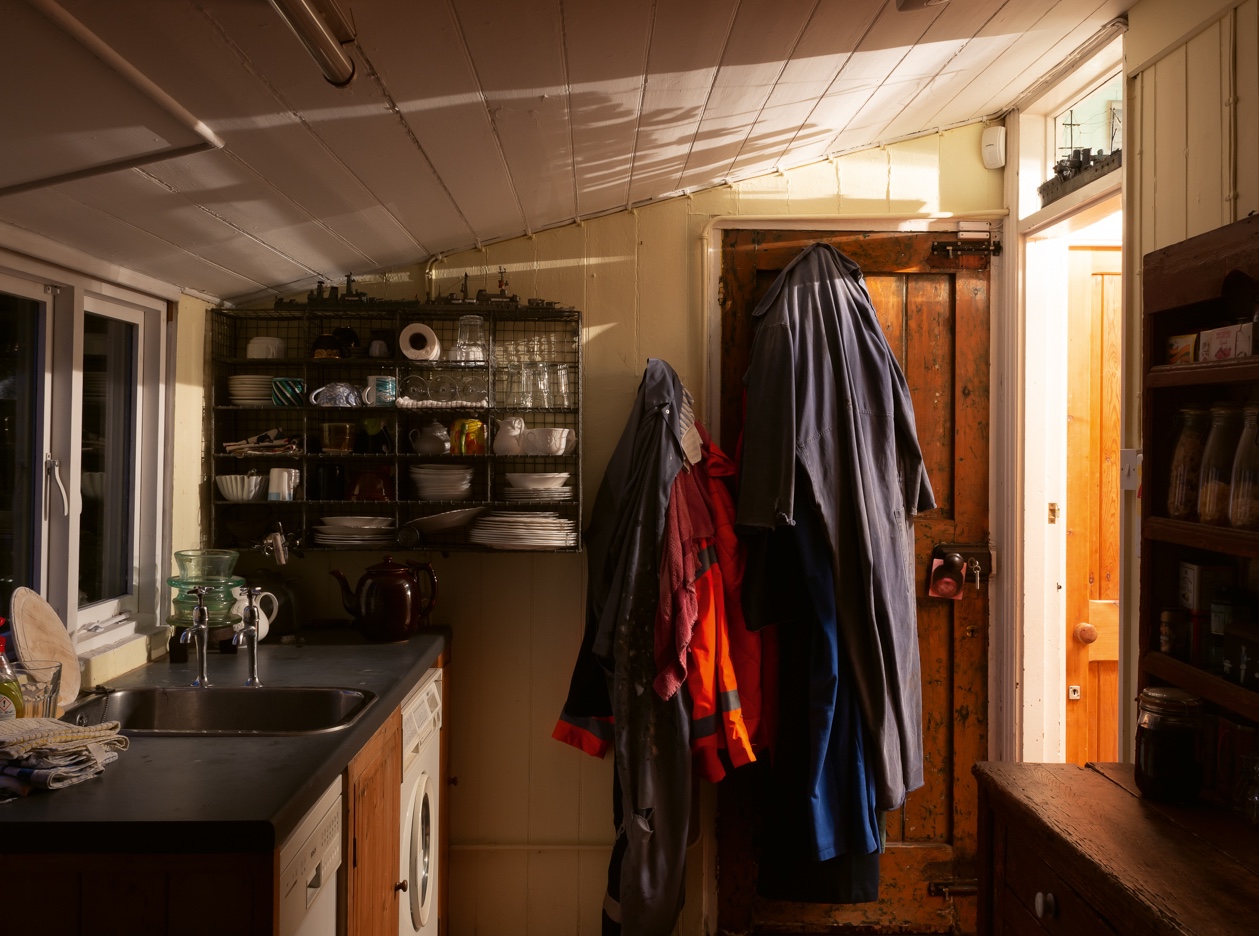
Derek Jarman's cottage kitchen. The artist and activist's trademark blue overalls hang on a peg
The book, then, while a highly readable addition to our understanding of this beloved cultural figure as a human being, feels nowhere near epic enough and begs for a weighty tome with expansive page sizes and filmic crops. But then, perhaps that’s besides the point.
Prospect Cottage: Derek Jarman’s House with photography and words by Gilbert McCarragher is published on 4 April 2024 by Thames & Hudson, £25
Caragh McKay is a contributing editor at Wallpaper* and was watches & jewellery director at the magazine between 2011 and 2019. Caragh’s current remit is cross-cultural and her recent stories include the curious tale of how Muhammad Ali met his poetic match in Robert Burns and how a Martin Scorsese Martin film revived a forgotten Osage art.
-
 Put these emerging artists on your radar
Put these emerging artists on your radarThis crop of six new talents is poised to shake up the art world. Get to know them now
By Tianna Williams
-
 Dining at Pyrá feels like a Mediterranean kiss on both cheeks
Dining at Pyrá feels like a Mediterranean kiss on both cheeksDesigned by House of Dré, this Lonsdale Road addition dishes up an enticing fusion of Greek and Spanish cooking
By Sofia de la Cruz
-
 Creased, crumpled: S/S 2025 menswear is about clothes that have ‘lived a life’
Creased, crumpled: S/S 2025 menswear is about clothes that have ‘lived a life’The S/S 2025 menswear collections see designers embrace the creased and the crumpled, conjuring a mood of laidback languor that ran through the season – captured here by photographer Steve Harnacke and stylist Nicola Neri for Wallpaper*
By Jack Moss